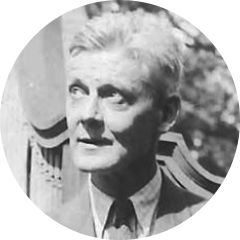Henry Ware Eliot, Jr.
(1879–1947)
Henry Ware Eliot, Jr. (1879–1947), TSE’s elder brother, went to school at Smith Academy, and passed two years at Washington University, St Louis, before progressing to Harvard, 1897–9, where he was an editor of Student Life. At Harvard, he displayed a gift for light verse in Harvard Celebrities (1901), illustrated with ‘Caricatures and Decorative Drawings’ by two fellow students. After graduating, he spent a year at law school, but subsequently followed a career in printing, publishing and advertising. He gained a partnership in Husband & Thomas Co. (later the Buchen Company), a Chicago advertising agency of which he became Vice-President, 1917–29, during which time he gave financial assistance to TSE and advised him on investments. He accompanied their mother on her visit to London in the summer of 1921, his first trip away from the USA. In February 1926, he married Theresa Anne Garrett (1884–1981), an alumna of the School of Fine Arts. In 1932 he published a detective novel, The Rumble Murders, under the pseudonym Mason Deal.
It was not until late in life that he found his true calling, as a research fellow in Near Eastern Archaeology at the Peabody Museum of American Archaeology and Ethnology, Harvard, where his principal publication was a discussion of the prehistoric chronology of Northern Mesopotamia, together with a description of the pottery from Kudish Saghir (1939): see too his posthumous publication Excavations in Mesopotamia and Western Iran: Sites of 4000–500 B.C.: Graphic Analyses (1950), prefaced by Lauriston Ward: ‘It was a labor of love, of such magnitude as to be practically unique in the annals of archaeology … a monument to his scholarship and devotion … Eliot had all the qualities of the true scholar, which include modesty as well as ability.’
He was also instrumental in building up the T. S. Eliot collection at Eliot House (Houghton Library). Of slighter build than his brother – who noted his ‘Fred Astaire figure’ – Henry suffered from deafness owing to scarlet fever as a child, and this may have contributed to his diffidence. It was with his dear, delicate and nervous brother in mind that TSE wrote: ‘The notion of some infinitely gentle / Infinitely suffering thing’ (‘Preludes’ IV).
